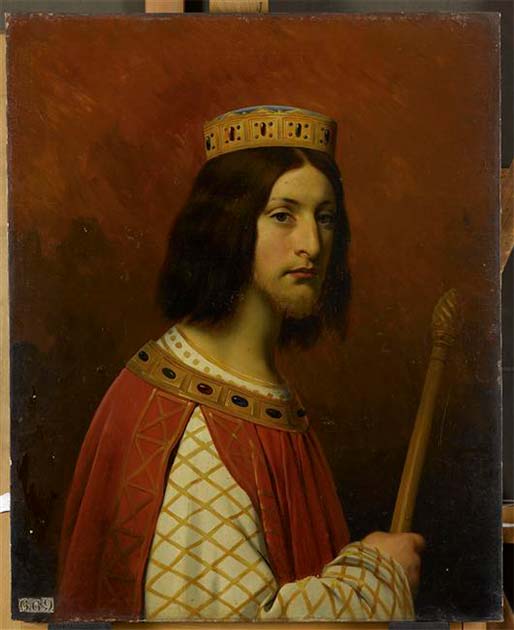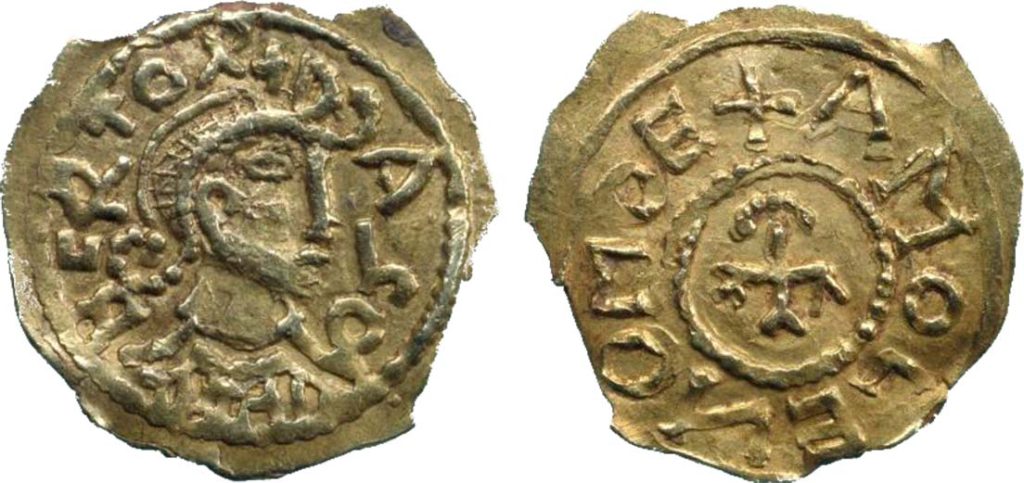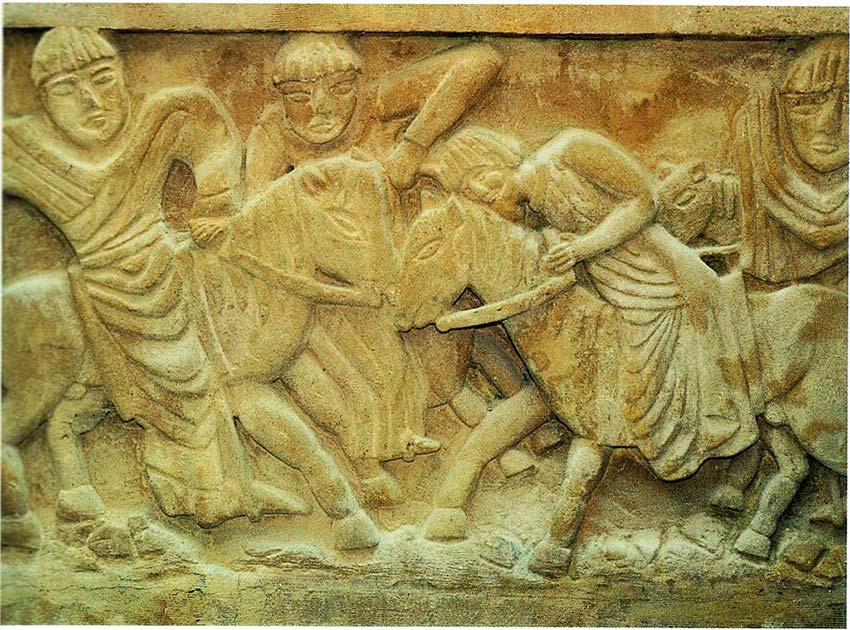King Dagobert II of Austrasia is a bit of a historical contradiction. Despite ruling a sprawling territory covering much of modern day France and Germany, he is one of the most obscure Merovingian kings (a line of rulers that had reigned over the Franks for centuries) but, from what we do know about him, also one of the most interesting.
Remembered as the last of the Merovingians, nothing about Dagobert’s reign, from his ascension to his fall, was simple. The most intriguing aspect of his reign however is his death, with many historians believing he was assassinated, leading to him receiving his own martyr cult.
Are they right? If so, what does that mean for the end of the Merovingians? Let’s take a look at the reign of one of history’s most overlooked kings.
A Tyrant or a Christian Martyr?
Dagobert II was the last of the Merovingian dynasty and ruled as a Frankish king from either 675 or 676 AD until his death only a few years later in 679 AD. While his reign was rather brief it was also extremely eventful, unfolding during a particularly turbulent period in early medieval Europe.
Dagobert was the son of King Sigebert III and an unnamed woman, with most historians believing Dagobert to be a bastard and not the son of Sigebert’s only known wife, Chimnechild. When Sigebert died, Dagobert was robbed of the throne by Grimoald, the administrator of the palace and Sigebert’s most powerful official.
While historical records are scarce the Book of the History of the Franks from 727 AD claims that devious old Grimoald had Dagobert tonsured (when monks have their heads shaved as a show of devotion) and then declared him unfit for duty since traditionally all Merovingian kings had long hair. He then had Dagobert exiled to Ireland and put his own son, Childebert on the throne.

Dagobert returned in 675 AD after the assassination of Childeric II which had sparked a civil war. According to the Life of Wilfrid (an 8th-century text recounting the life of St Wilfrid) Dagobert returned after his surviving family realized he was still alive and asked Wilfrid to bring him back.
- The Merovingians: Were these Dark Age Kings descended from Christ?
- Oera Linda: Ancient Wisdom or Modern Fraud?
It wasn’t just Dagobert II’s ascension to the throne that was tumultuous. During the few years he reigned he was at war with the rival kingdom of Neustria, managed to sign a peace treaty with the Lombard Kingdom, and brought back gold coinage. He also had to navigate the complex dynamics of a kingdom in transition, as the Frankish realm was in the process of Christianization.
The problem with Dagobert II is there are so few contemporary sources that cover him and those that do are biased. According to the Life of Wilfrid Dagobert was a tyrant who alienated his bishops by taxing them heavily. He was supposedly just as unpopular with both his people and the nobility.
Dagobert’s death is steeped in historical ambiguity, and we must rely on near-contemporary sources, like the Life of Wilfrid, which offer some insight into the circumstances surrounding his assassination. According to this text, Dagobert was assassinated in late 679, shortly after a visit from Wilfrid himself.
The book suggests that the conspiracy to assassinate him was orchestrated by “treacherous dukes” with the consent of the bishops. This reflects the political and religious tensions of the time.
Some historians have theorized that it was Dagobert’s cousin, Theuderic III, ruler of Neustria, who wanted Dagobert dead. The two men had been in conflict for years and the fact Theuderic ascended to the throne following Dagobert’s death does raise some suspicions. On the other hand, late tradition held that it was Dagobert’s own godson, John, who killed him while hunting in the Woevre (part of northeastern France).

That’s if Dagobert was even assassinated at all. It’s completely possible that Dagobert died of natural causes or from a hunting accident (a surprising amount of medieval kings died on hunting trips).
Whatever the truth, Dagobert II’s death was a pivotal moment in the history of the Frankish kingdom. It marked the end of the Merovingian dynasty and paved the way for the political transformation of the whole region.
Dagobert’s Martyr Cult
Despite his supposed unpopularity during his lifetime, Dagobert eventually received his own martyr cult, a form of veneration and devotion to a person who has suffered persecution or death for their religious beliefs or other noble causes. To understand why this occurred, we must consider the context of the Frankish kingdom during his time.
- Casimir IV Jagiellon: A Polish King with a Cursed Tomb?
- Eric Bloodaxe: Did this Viking Win an English Kingdom?
For a start, Dagobert II’s reign unfolded during a time when the Frankish realm was undergoing Christianization. As the last of the Merovingians, his support for Christianity was notable. His efforts to strengthen the Christian Church and the resulting tensions with bishops and religious figures added to the significance of his reign.
His assassination likely further contributed to the development of a martyr cult. The Life of Wilfrid depicts Dagobert II as a controversial figure who had antagonized both nobility and bishops. This portrayal fueled the belief that his death was a consequence of his Christian faith and dedication to the Church. The notion of a ruler who faced persecution for his religious beliefs and met a violent end resonated with the Christian community.

In the wake of his assassination, the emerging Christian Church sought to commemorate Dagobert II’s martyrdom. The veneration of martyrs was a well-established practice, and Dagobert’s story fit the mold of a martyr who had sacrificed his life for his faith. Pilgrimages to his tomb and the veneration of his relics contributed to the growth of a martyr cult around him.
Finally, it’s likely there was an element of politics at play in making Dagobert a martyr. While we don’t know exactly when the cult was founded, we do know that it was revived by Charles the Bald, king of West Francia in 872 AD. He had Dagobert’s relics brought to a specially built basilica in Stenay, probably in an attempt to establish himself in that part of Lothringia, which he had only just taken over.
For kings like Charles the Bald cults of martyrs often served as a terrific way to legitimize and strengthen their rule. Promoting a king as a martyr was also a fantastic way to consolidate power by gaining the support of the Christian population. Basically, it was probably a publicity move.
An Unknown End
Dagobert II’s life and death are a reminder of the complexities of early medieval Europe. His reign was marked by political strife and religious transformation, and his mysterious assassination continues to be a source of historical intrigue. The emergence of a martyr cult around him reflects the enduring influence of this mysterious figure.
While the details of his death remain elusive and theories abound, Dagobert II’s legacy endures. His story reminds us of the dynamic interplay of power, religion, and politics in the Frankish kingdom, leaving us with an everlasting historical enigma to ponder.
Top Image: Dagobert II’s death will likely remain a mystery. Source: Jenar / Adobe Stock.